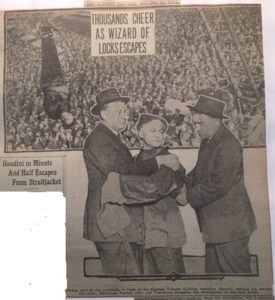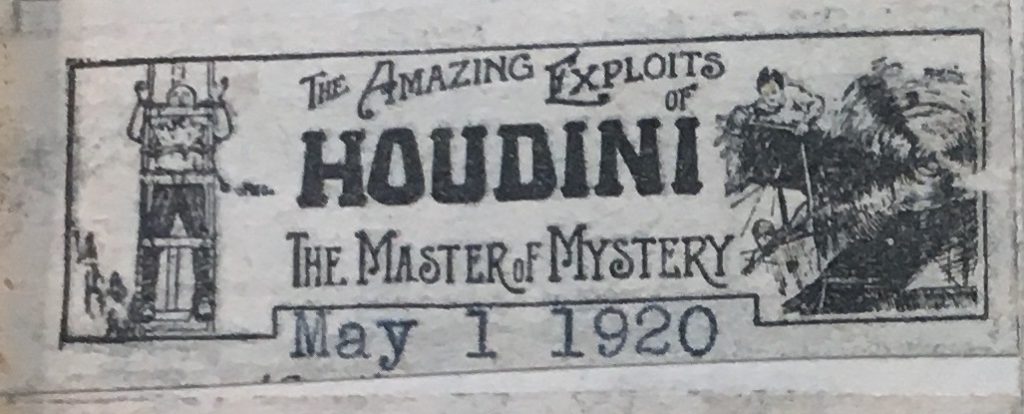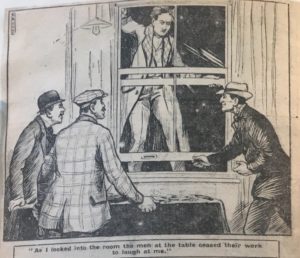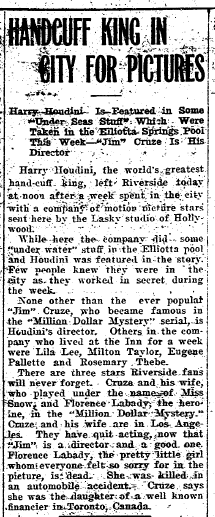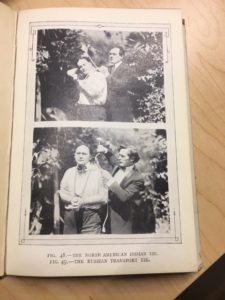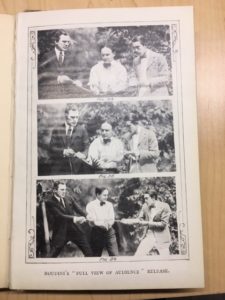What really happened on October 24th, 1926 between the train arriving and the show in Detroit?
Let’s see what the biographers have to say.

According to Williams & Epstein [1951]:
he took his scheduled train that evening, to Detroit. The doctor’s summoned to meet him at the station in the morning diagnosed appendicitis and ordered an immediate operation, but Houdini insisted that he must appear in the theater that evening. When he walked out on the stage he had a temperature of 104 degrees.

According to Gresham [1959]:
Urged by Bess, Collins sent a wire ahead of them from the train. When they pulled into Detroit, they were met by a doctor. Houdini’s temperature was one hundred and two degrees.
He scorned going to a hospital. But when they got to the hotel he crawled into bed and had Bess pile blankets on him. His chill, which shook the bed, lasted a half hour.
In spite of his loud refusals, Bess sent for a committee of doctors. They were unanimous—Houdini had appendicitis and needed an operation at once. Bess wept and argued all day when Houdini was not dozing uneasily. When curtain time approached he asked for news from the box office. The report came back, “Sold out. Not a vacant seat in the house.” That settled it, “Help me up. They’ve paid their money to see Houdini. “By God, they’re going to get a show.” His temperature was now one hundred and four.
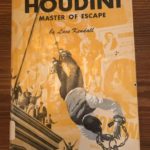
According to Kendall [1960]:
“You can’t take that train to Detroit tonight,” Bess insisted, “show or no show”. He was scheduled to appear in Detroit the next evening.
“A train ride won’t hurt me. I always do my best thinking on trains.”
Stubbornly, he had his way. But as the train clacked onward across the autumn-colored landscape, all thought was driven from him. He was conscious of only one thing, pain driving through him with every turn of the iron wheels on the rails. At last he was forced to give in to the pleas of the nurse and Bess that a wire be sent asking a doctor to meet the train at the station in the morning.
The doctor was there. As soon as Houdini could be gotten to a hotel, the doctor his temperature and examined him. The thermometer measured 102 degrees. Then a severe chill gripped him and he lay shaking for almost a half hour. Other physicians hurried to his bedside.
“Your symptoms indicate acute appendicitis,” one of them told the shivering and sweating magician. You must be operated on at once.”
Houdini clenched his teeth and asked Bess, “How many tickets have been sold for the show tonight?
“All of them, someone else spoke up. “A full house.” “I’ll go through with my act,” Houdini said.
That evening when he walked out onto the stage his temperature was 104 degrees.
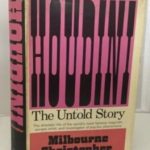
According to Christopher [1969]:
A telegram was hurriedly dispatched to George H. Atkinson, the show’s advance man in Detroit, when the train made a brief stop at London, Ontario. He was instructed to have the best doctor in the city ready to give Houdini a thorough examination before the opening, Nurse Rosenblatt took Houdini’s temperature, it was 102 degrees.
The Montreal train arrived late. Collins doubted they could track the equipment to the theater, hang scenery, and get the magical apparatus uncrated and assemble before curtain time. Rather than check in at their hotels, the entire company went directly to the theater. There was no doctor waiting at the Garrick despite the urgent wire. Houdini pitched in and helped stagehands and his assistants set up the heavy gear.
Dr. Leo Dretzka and the show’s advance man paced the lobby at the Statler Hotel. The doctor had to leave for a medical convention that night, but he had promised to examine the ailing escape artist first. After asking a dozen times at the desk if Houdini had checked in, Atkinson finally phoned the theater.
There was no cot in Harry’s dressing room at the Garrick. He stripped off his clothes and stretched out on the floor. Dr. Dretzka knelt and touched the inflamed stomach. Bess didn’t hear the doctor say that an ambulance should be called immediately, that Houdini was suffering from acute appendicitis. Had she known the danger her husband was in, there would have been no performance that night.
Harry dressed for the show. The theater manager had stopped to say the house was sold out and standees were lined outside to get in. “They’re here to see me,” Harry explained as the worried doctor rushed away to make his train. “I won’t disappoint them.”
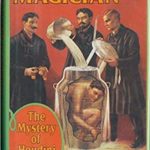
According to Fitzsimons [1981]:
After the show the company boarded the train for Detroit, where they were booked for a two-week run. When the train started, the pain was so intense that he could hide it no longer. He told Bess about the blows to his stomach. Nurse Rosenblatt took his temperature and it to be 102 degrees.
The train was scheduled to stop at London, Ontario, and from there a telegram was dispatched to the show’s advance man in Detroit, instructing him to have a doctor waiting. When Houdini arrived the doctor examined him. He diagnosed acute appendicitis and ordered an ambulance to be called immediately. But Houdini refused to go into hospital right away. The theatre was sold out and he would not disappoint the audience.

According to Brandon [1993]:
Houdini closed in Montreal that Saturday, 23 October, and was due to open in Detroit the following day for a two-week run. On the train he was no longer able to conceal his suffering. Bess, distraught, and barely recovered from her own illness, telegraphed ahead to the show’s Detroit advance man instructing him to get the best doctor in Detroit ready to examine Houdini before the opening.
The train was late – too late for them to check in at the hotel before leaving for the theatre. The doctor was waiting, meanwhile, in the hotel lobby. Finally the advance man, waiting with the doctor, thought to telephone the theatre. The doctor rushed round and examined Houdini on the dressing room floor, there being nowhere else he could lie down. He diagnosed acute appendicitis and said an ambulance should be called at once to take Houdini to hospital. Bess did not hear this, and Houdini did not tell her. Nor did the theatre manager, who was present during the examination. He had his own worries. The house was sold out and queries were still waiting outside the theatre. He said, “We have a $15,000 advance sale. What are we going to do? to which Houdini replied, “I’ll do this show if its my last”.
He was now running a temperature of 104 degrees.
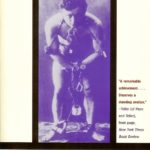
According to Silverman [1996]:
Scheduled to open in Detroit the next evening, he, Bess, and their entourage got to the train late that night. Once on board he experienced such severe stomach pains that a wire was sent ahead asking for a physician to meet the train at the Detroit station in the morning.
Houdini arrived in Detroit with a temperature of 102. After examining him hurriedly, a physician found signs of appendicitis. Houdini nevertheless checked into the Statler Hotel, where for a half hour he shook with chills. He was determined to give his opening night show, even though at curtain time his temperature had risen to 104.
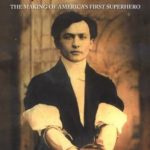
According to Kalush [2006]:
After Saturday’s evening show, the troupe prepared to take an overnight train to Detroit, where they were scheduled to open their run on Sunday night.
The opening night sold-out crowd at the Garrick Theater in Detroit was getting antsy Houdini’s show was scheduled to start at eight-thirty, but after a short announcement that there was a delay due to the late arrival of personnel and equipment from Toronto, it was almost nine and there was still no sign of the mystifier. Suddenly, the familiar strains of “Pomp and Circumstance” echoed through the theater and Houdini walked onstage.
“We have just made a thousand-mile journey from Montreal, and we are tired,” he exaggerated, as he began to perform magic.
A doctor had examined him before the show and had urged him to the hospital immediately, but Houdini had refused. “They’re here to see Houdini,” he spoke of the sold-out house. “I won’t disappoint them.”
So what is the source for these different versions. It appears, Williams & Epstein, Gresham, Kendall, and Silverman’s source was Kellock [1928] and the New York Times, 1 Nov 1926.
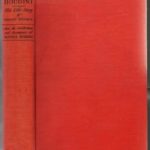
According to Kellock [1928]:
He had to make a train for Detroit, where the show was due to open the next evening.
Houdini was so ill on the train that his attendants wired for a physician to meet him at the station in the morning. His temperature on arrival was 102. As soon as he reached his hotel in Detroit he had a chill which lasted twenty-five minutes. Several physicians, who had been called insisted that he cancel his performance. They said that his symptoms indicated appendicitis, and an immediate operation was imperative. Houdini, informed that the house was sold out, doggedly declared that he must go on. Just before the curtain went up his temperature was taken at 104.
According to NYT:
He suffered no distress at the time but after he had boarded a train for Detroit, he complained of pain. At first he attributed it to something he had eaten but as it increased he called in the company’s nurse, who in turn arranged by wire to have a physician meet the magician in Detroit.
Dr. Leo Kretzka, a prominent physician, made a hurried examination and told the patient there were symptoms of appendicitis. He left it to Houdini to decide whether it would be advisable for him to appear that evening at the Garrick Theatre for the opening night of the show. Houdini would not disappoint his admirers.
Fitzsimons, Brandon’s and Kalush source was Christopher, although neither mention a Dr. Dretzka. And Christopher’s source was the Conjurer’s Magazine May 1948 article, The Last Man to see Houdini Alive, by Bruce Reynolds:
George Atkinson, Dean of Theatrical Press Agents, told me the story one evening in the Lambs Club in New York City. “Then the fateful day when I was in Detroit where Houdini was to play next. I received a wire from his manager who was in Montreal, that ‘The Great Man’ had suddenly been stricken ill and that I was to have a doctor meet the train upon his arrival. He was due in Detroit on Sunday afternoon and was scheduled to give a performance that night. I had a doctor waiting at the hotel but Houdini did not come to the hotel; instead he went directly to the theatre, and there in grave alarm I found him running hither and thither, anxious about his props. I quickly phoned the doctor back at the hotel. The doctor rushed to the theatre and found Houdini sitting on a packing case, with his funny little hat pulled down over his eyes. His temperature was 103. The doctor hurried him into his dressing room, laid him on the floor and made an examination. ‘Appendicitis,’ the doctor said. He ordered Houdini to his hotel and to bed. Cold compresses were to be administered at regular intervals. Houdini scoffed at the doctor’s orders. Defiantly, he went on about arranging his props and he gave a show that night.”
So did a physician see Houdini on the train, the floor of the dressing room at the Garrick Theatre, or at the Statler Hotel? Did Houdini go to the Statler Hotel before going to the Garrick Theatre, or did he go directly to the Theatre? I tend to believe the following:
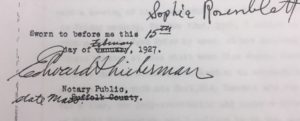
According to Sophie Rosenblatt’s (nurse) affidavit [Feb 15th, 1927]:
He had to leave Montreal that night for Detroit and on the way to the railroad station and at the station itself, he was very sick and constantly complained of pains in his stomach. I took him in a restaurant to get a cup of hot boiled water and took a bottle of black coffee for him on the train. He was unable to sleep all that night after leaving Montreal and constantly stated that he had pains in his stomach.
The following morning I took his pulse and told Mrs. Houdini that her husband was a very sick man. I asked Mr. Stuckel, his manager, to have a physician meet the train at Detroit as I realized that Houdini was very ill and was getting worse ever since the blows were struck in his dressing room. Dr. Leo Dretzka of Detroit was the physician who first saw him in Detroit. His temperature was 102, his pulse from 120 to 128 and his respiration 46. At the hotel in Detroit where he went upon leaving the train, he had severe a severe chill which lasted for about twenty-five minutes. At that time his temperature was 103.6, his pulse was 130 and his respiration 48. We then called Dr. Richards, the hotel doctor, who saw Houdini at about 6:30 in the afternoon and prescribed pills for Houdini to take every half hour for his pulse and respiration. He went to the theatre to give his evening performance. He was practically helpless and was unable to dress himself for the performance. We took him to the theatre and he was in bad shape throughout the performance. It seemed that he was unable to open his eyes while he was putting on his make-up for the performance. After each act he literally fell down almost helpless and dragged himself on the stage again. After the performance he was carried to the hotel and his condition was reported to Dr. Richards who was then out of town. Dr. Richards recommended Dr. Cohn and Dr. Cohn called on Dr. Owen who took a blood count. It was then decided to call in Dr. Watkins and Dr. Kennedy, distinguished surgeons of Detroit, to examine Houdini. He was taken from the hotel to the Grace Hospital in an ambulance and an operation was decided upon.
I suppose its also possibly that Houdini went to the theatre first, saw Dr. Dretzka, who ordered him to his hotel where he saw Dr. Richards and then returned to the theatre to perform.
What do you believe?
Related:
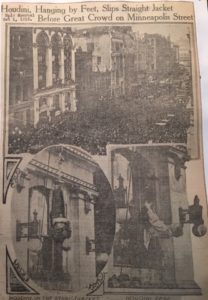 At the time of the September 29 post, I didn’t have a photograph for this Minneapolis escape, nor much information, but that changed when I visited the McCord Museum last year. The very first scrapbook, I looked at had a lot of newspaper clippings that included straightjacket escapes, like the one that took place 104 years ago on September 30, 1915. That’s right, the escape actually took place on September 30, 1915, not September 29, 2015 as previously documented by others.
At the time of the September 29 post, I didn’t have a photograph for this Minneapolis escape, nor much information, but that changed when I visited the McCord Museum last year. The very first scrapbook, I looked at had a lot of newspaper clippings that included straightjacket escapes, like the one that took place 104 years ago on September 30, 1915. That’s right, the escape actually took place on September 30, 1915, not September 29, 2015 as previously documented by others.
